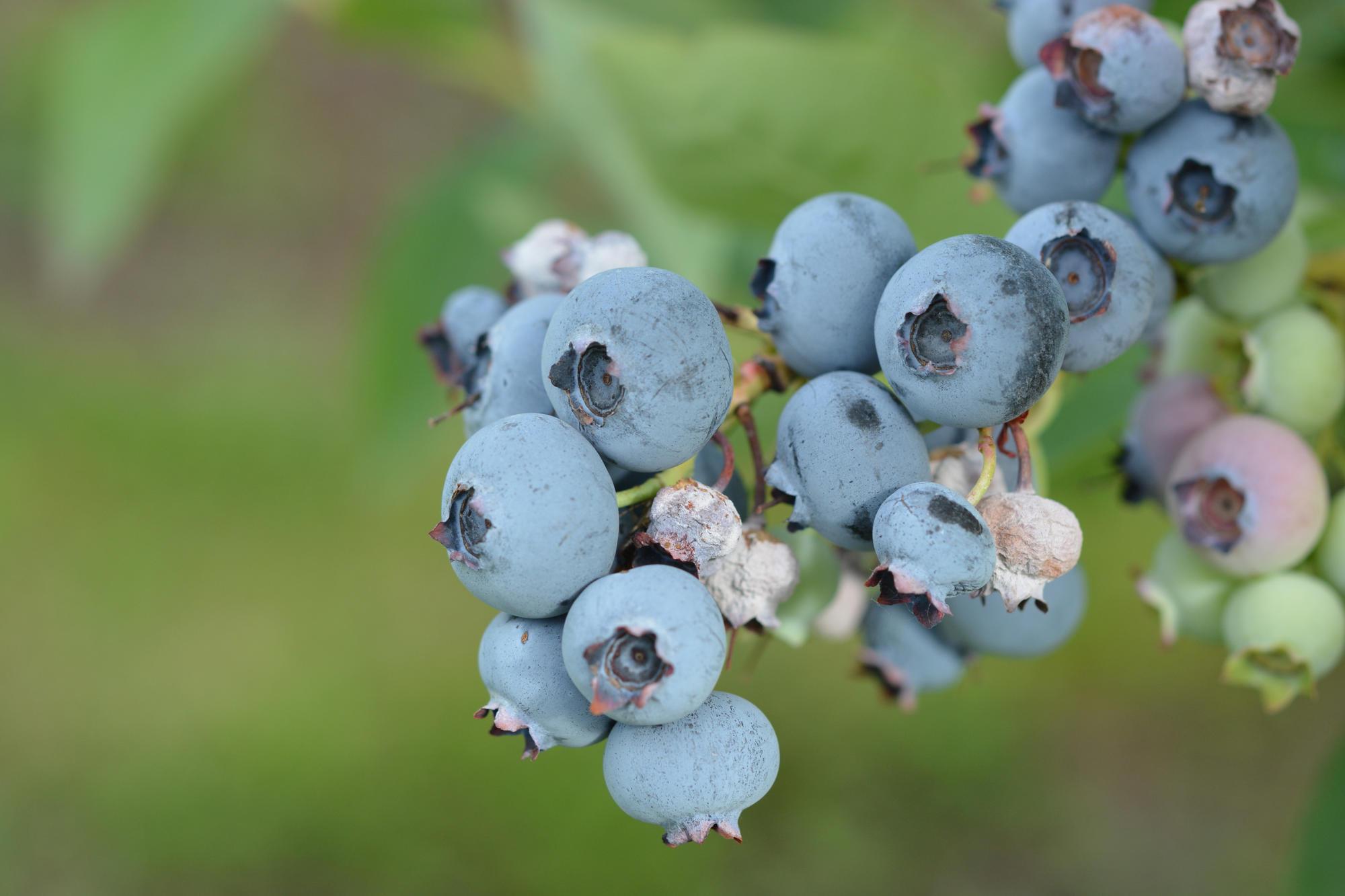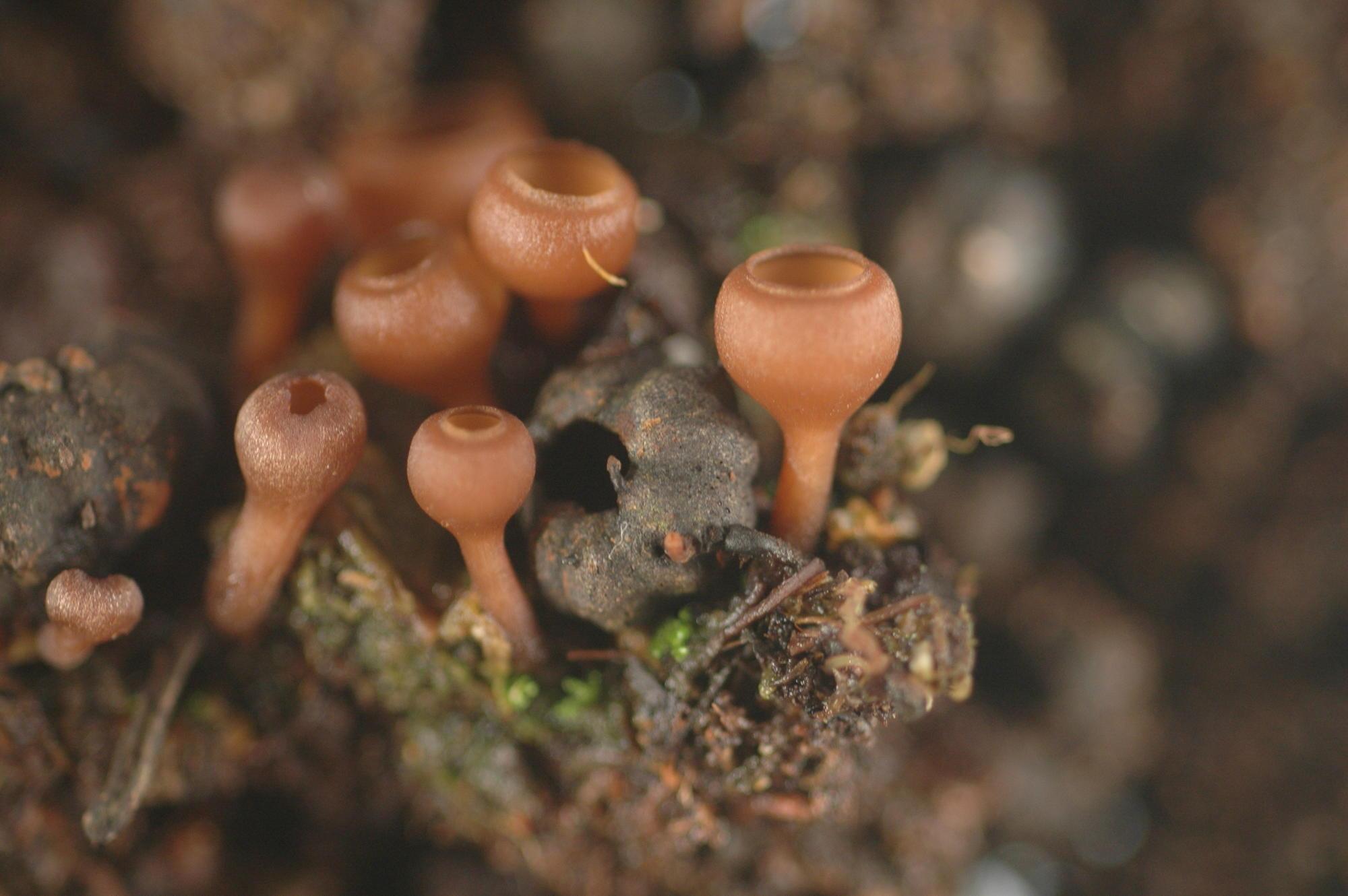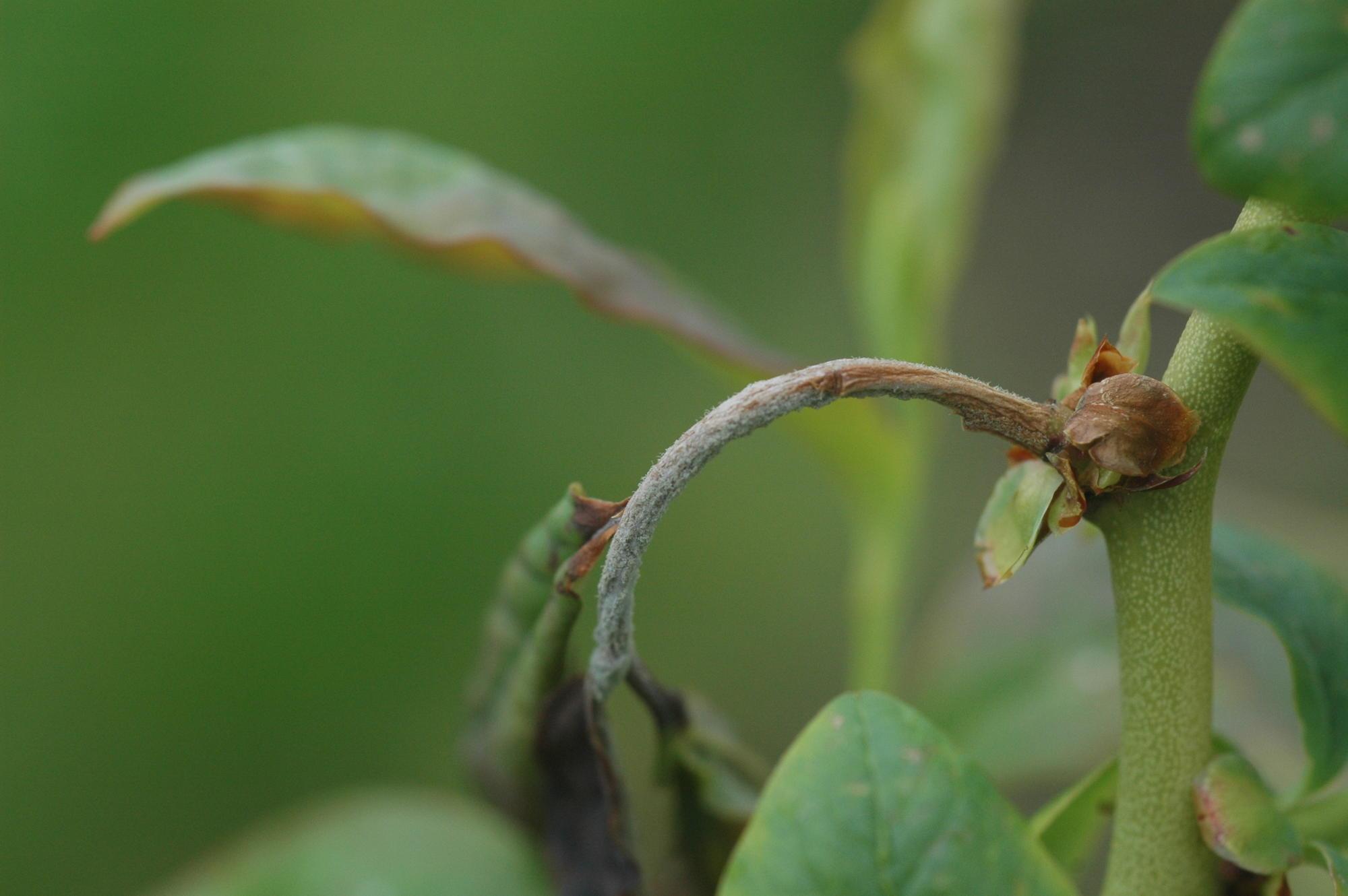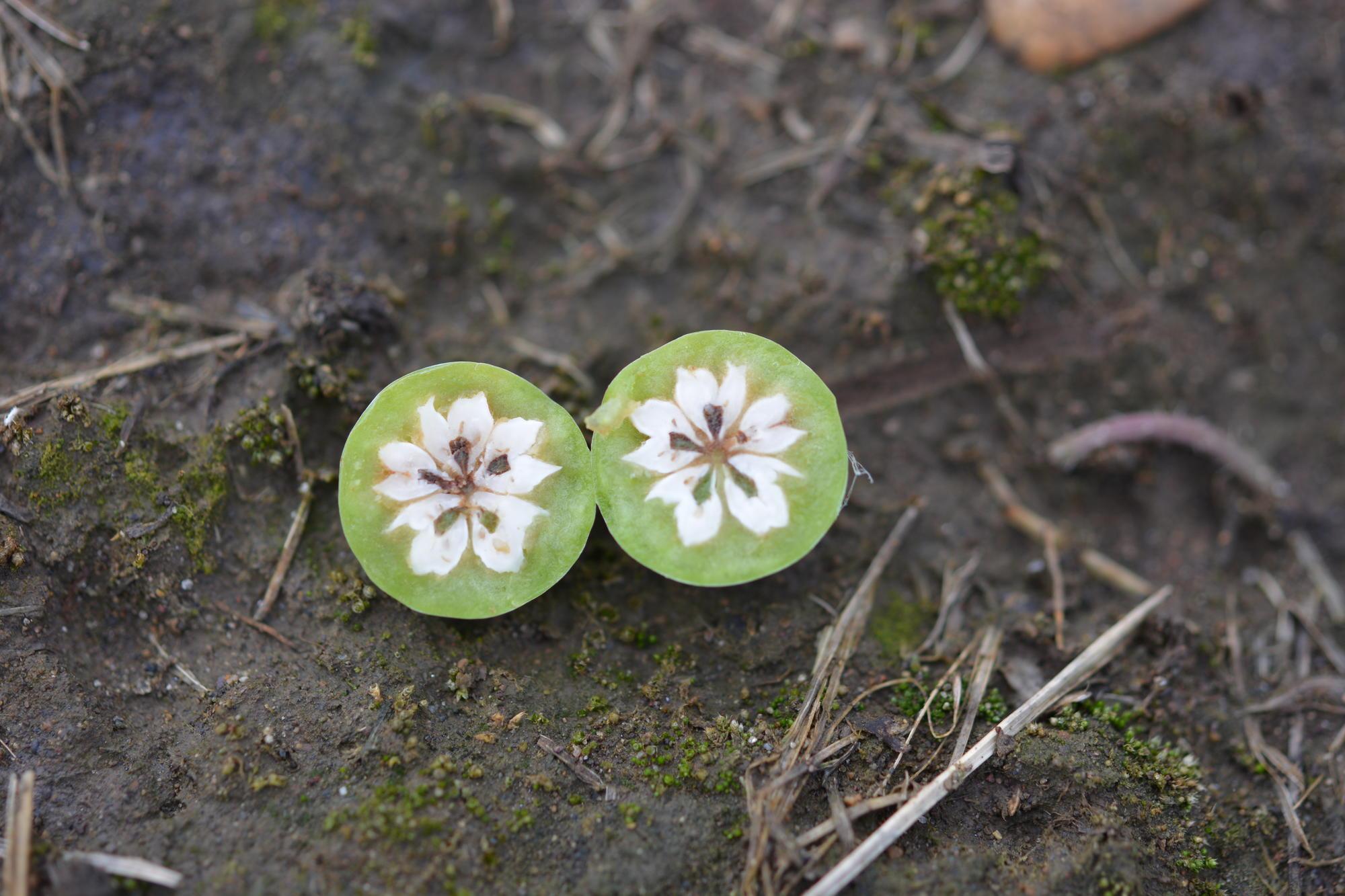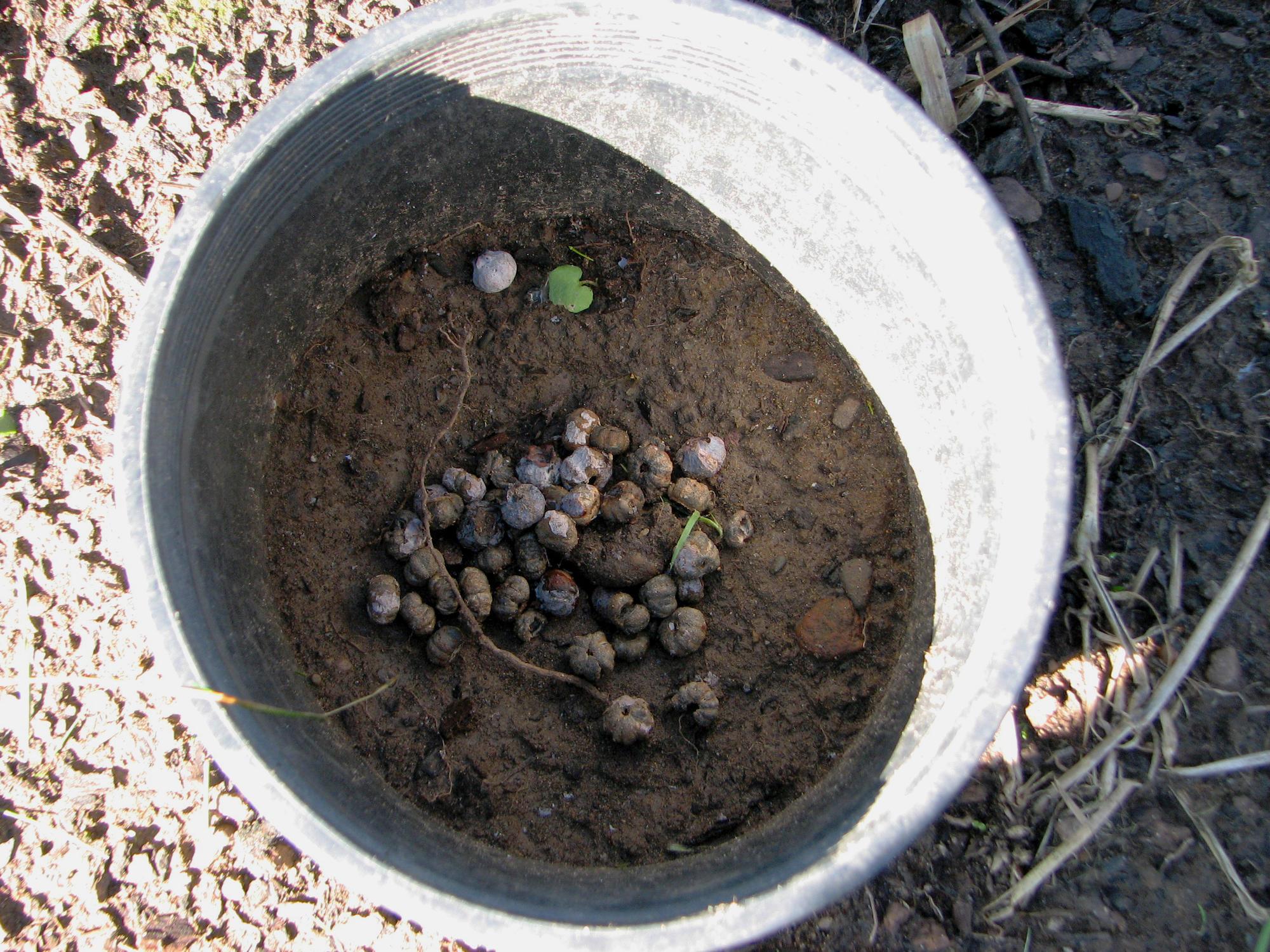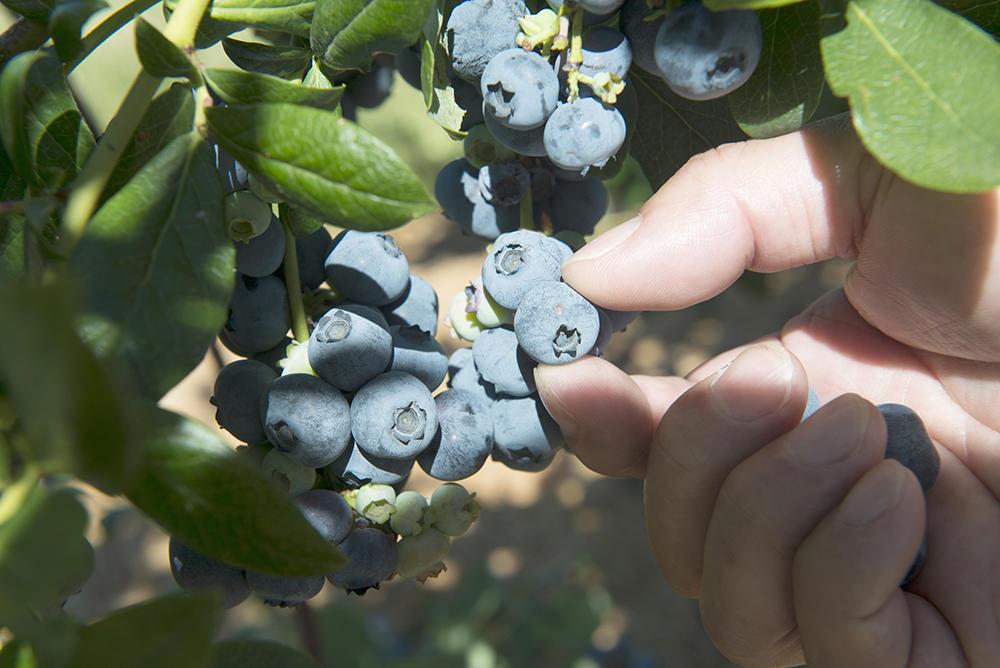Mummy berry is a blueberry disease caused by the fungus Monilinia vaccinii-corymbosi (Figure 1). This disease is prevalent throughout the Pacific Northwest, west of the Cascade Mountain Range, affecting the northern highbush blueberry (Vaccinium corymbosum) industry. Growers often underestimate the potential of mummy berry to cause substantial yield loss, as it may occur at low levels for many years. Just one year of environmental conditions favorable to the fungus, however, can greatly increase this disease, resulting in dramatic annual yield losses.
This publication is intended for blueberry growers in the Pacific Northwest. It briefly describes the mummy berry disease cycle and available management methods.
Mummy berry disease cycle
M. vaccinii-corymbosi has two discrete infection periods. Primary blueberry infection begins at bud break, and secondary infection occurs at flowering.
In spring, under favorable environmental conditions such as warm temperatures and adequate soil moisture, fruit that was previously infected by M. vaccinii-corymbosi will produce a small mushroom (an apothecium) (Figure 2). These apothecia can be found around the time blueberries break bud. The floral buds break first, followed a week later by the vegetative shoots. This newly visible plant tissue is easily infected by the wind-carried spores coming from the apothecia.
Primary infection is characterized by discolored shoots or flower clusters that are drooping, wilted, rosy-brown and curled under. They also typically have a mat of brown to bluish spores covering the veins of infected leaves (Figure 3).
These microscopic spores are moved from infected shoots and flower clusters to open flowers primarily by pollinators such as honeybees and bumblebees, but also by wind and water.
Secondary infection occurs inside developing blueberry fruit and can only be seen when infected green berries are cut open. A white fungal tissue can be seen growing outward and invading the fruit (Figure 4). As the fungus takes over, berries shrivel and turn a pinkish-purple color. These shriveled berries take on a mummified appearance, which is where mummy berry disease gets its name. In contrast, healthy blueberries remain plump and ripen normally.
The dry, shriveled berries (now called mummies) will drop from the bush and lie on the ground from late summer through winter. In early spring, these mummies from the previous season will form apothecia and begin a new disease cycle.
Growers can use multiple tactics to effectively and reliably manage the disease. Choose and integrate any of the following methods that make sense for your particular timing, climate, location, production system and labor input.
Management options
Cultivar selection
When establishing a new farm or expanding production, choose resistant cultivars such as Reka, Liberty and Olympia. Lists of cultivars resistant to this disease and others are available through state Extension offices and online publications. In established fields, easily infected cultivars, such as Berkeley, should be removed and replaced with resistant types.
Weed management
Good weed control makes other practices, such as scouting, raking and mulching, more effective.
Raking
Raking removes mummies from the field between harvest and bud break the following season. Raking works best when used in combination with other sanitation practices such as harvesting (see below). Typically, growers with small-scale production systems will rake rows during the fall, paying particular attention to alleys. The collected debris is disposed of by burning or burial. This practice is more labor intensive and less efficient than harvesting, but can still help remove mummies from the field.
Scouting
Scouting can help determine the presence of mummy berry during the fall and winter seasons, so prevention and avoidance techniques can be employed before spring. Mummies can typically be found under leaf litter or in and around alleys, root crowns and the base of mounds, because this is where mummies often roll after they drop from the bush. An instructional video on how to scout for mummies is available through the Northwest Center for Alternatives to Pesticides' YouTube channel.
Some growers also keep a selection of mummies in the field for easy viewing. This can be done by gathering about 100 mummies at harvest and placing them into a container for year-round observation (Figure 5). By observing what stage the fungus is at in its overwintering cycle, growers can determine key months to implement practices such as mulching and spraying.
Mulching
Mulching enhances water retention around the root crown, can help maintain a slightly acidic soil pH, increases soil organic matter and serves as a disease-management method. Research has shown that apothecia can be significantly reduced when rows are mulched with 2 inches of Douglas-fir sawdust. For effective management, mulch should be applied in late winter (mid- to late-February) or earlier in the fall and winter months if maintained at the 2-inch depth.
Disruption (raking)
Disruption, sometimes referred to as raking, is when a harrow or chains are dragged through the field in early spring. Disruption breaks apart apothecia developing in and around aisles. While there is no research quantifying the effects of disruption, many growers who use it report that it is both effective and worthwhile.
Fungicides
A wide variety of synthetic and a few organic fungicides are registered to protect blossoms and foliage from bud break until the end of flowering. Begin spray applications to all blueberry fields when the earliest cultivars break bud. With regular scouting, the first application can be timed to coincide with apothecial development. Tank-mixing or alternating products with different modes of action or both are recommended to prevent the build-up of resistant fungi. Several biocontrol agents have been registered to manage mummy berry, but do not tank-mix biologicals with antimicrobial compounds. See various state pest-management guides for details and the Pacific Northwest Plant Disease Management Handbook section on mummy berry.
Harvesting
Summertime harvest is the easiest time of the year to remove mummies from the field (Figure 6). By harvesting all fruit from the bush, then sorting the diseased fruit from healthy berries, mummies can be collected for proper disposal, such as burial.
¡Use los pesticidas con seguridad!
- Póngase ropa de protección y equipo de seguridad según las recomendaciones de la etiqueta. Báñese después de cada uso.
- Lea la etiqueta del pesticida—aunque lo haya usado antes. Siga al pie de la letra las indicaciones de la etiqueta (y cualquiera otra indicación que Ud. tenga).
- Tenga precaución al aplicar los pesticidas. Conozca su responsabilidad legal como aplicador de pesticidas. Usted puede ser responsable de heridas o daños resultantes del uso de un pesticida.
